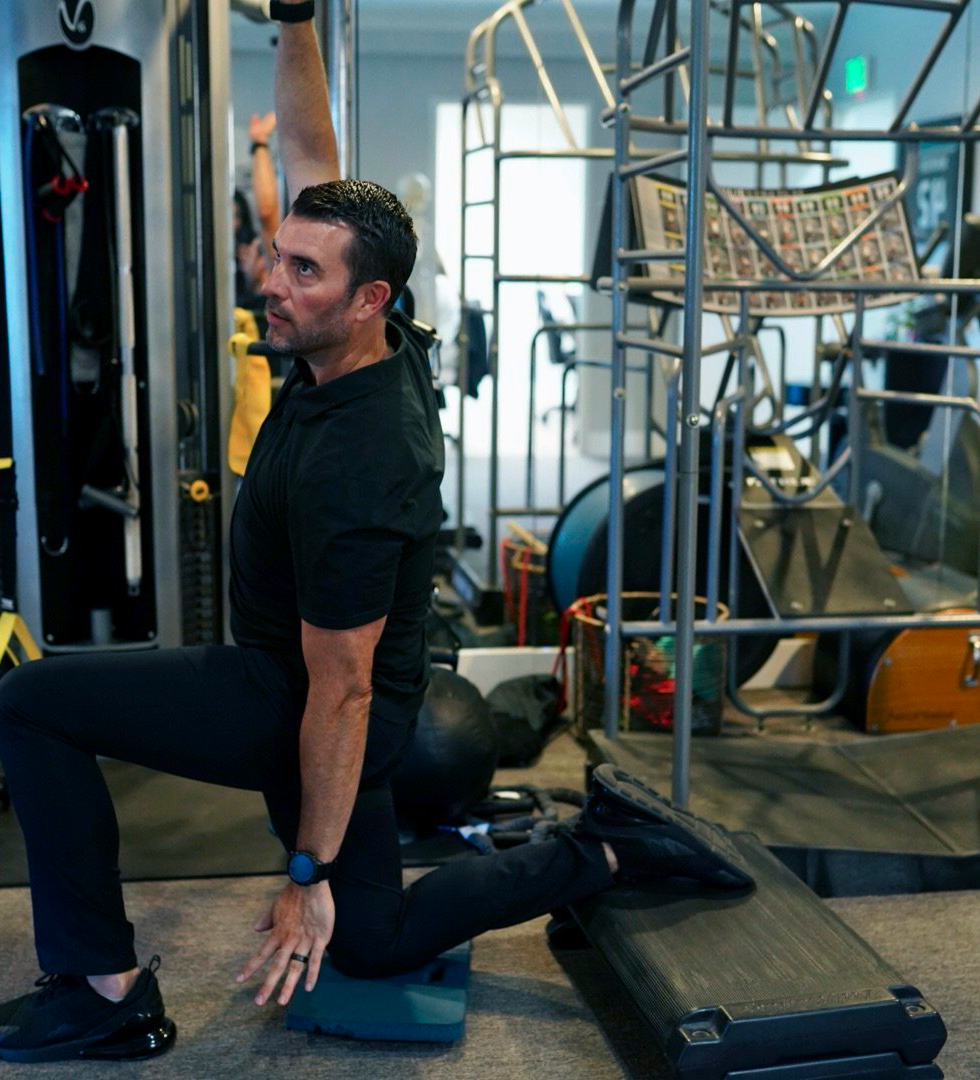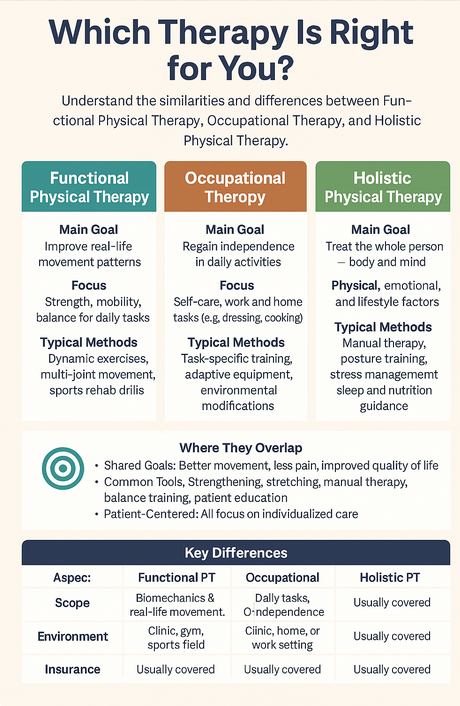Understanding Functional, Occupational, and Holistic PT Therapy
Physical therapy (PT therapy) is far from a one-size-fits-all field. You may hear terms like functional, occupational, and holistic therapy used interchangeably, but each approach to PT therapy differs in focus, methods, and goals. Understanding these differences helps you make informed choices about your care to maximize your recovery or wellness outcomes.
Functional PT Therapy: Movement with Purpose
Functional physical therapy focuses on restoring the ability to perform real-life movements and activities. Therapists who specialize in functional PT assess how your muscles, joints, and nervous system work together to complete daily tasks, whether that’s squatting to lift a box or carrying groceries up the stairs.
This approach to physical therapy often combines traditional strength and flexibility exercises with dynamic, multi-joint movements. For example, instead of just strengthening a knee with isolated extensions, a functional therapist might guide you through squats, lunges, or balance drills that mirror actions at work or home. The goal is to re-train the body to move safely and efficiently in real-world situations, which reduces the risk of re-injury.
Athletes and active individuals frequently benefit from functional PT therapy, but anyone recovering from surgery, injury, or chronic pain can benefit if practical mobility is the goal.
Occupational Therapy: Regaining Independence in Daily Life
Occupational PT therapy overlaps with functional PT in that it deals with restoring movement and strength. However, this therapy focuses specifically on helping people perform everyday activities that give life meaning, like getting dressed, cooking, bathing, or working at a job.
Occupational therapy considers not only a patient’s physical limitations but also cognitive, sensory, and environmental factors that can affect daily tasks. For example, this therapy might help a stroke survivor re-learn how to button a shirt, or they might teach energy conservation techniques to someone with a chronic illness.
Occupational PT therapy also involves modifications to the environment or use of adaptive equipment. A therapist may suggest installing grab bars in a shower, using specialized kitchen tools, or adjusting a workstation to prevent repetitive strain injuries. This therapy bridges the gap between recovery and independent living.
Holistic Physical Therapy: Treating the Whole Person
Holistic physical therapy blends conventional therapy with a broader view of health. Holistic therapists recognize that pain and dysfunction rarely have a single physical cause. They consider factors like stress, sleep, nutrition, posture, and even emotional well-being.
A holistic therapist combines manual therapy, functional exercises, and patient education with breathing techniques, mindfulness practices, and recommendations for lifestyle changes. For example, they may examine how a patient’s desk setup, shoe choices, or stress level contribute to chronic back pain.
This type of PT therapy treats the root causes and contributing factors of a condition, not just the symptoms. You will find holistic physical therapists most often in private practice settings and holding certifications in related areas like myofascial release.
Where They Overlap
All three approaches share some common ground. They aim to improve quality of life and increase a patient’s ability to move and function. For example, someone recovering from a shoulder injury could receive functional PT to regain strength and movement, occupational therapy to adapt tasks like dressing, and holistic care to address muscle tension and stress that might be hindering recovery.
These therapies also share evidence-based methods. Stretching, strengthening, balance training, manual therapy, and patient education appear in all three, but the focus and integration vary.
Another area of overlap is patient-centered care. Modern therapists in any of these specialties often design individualized plans, recognizing that each patient has unique goals and barriers.
Where They Differ
Where they truly differ is in their scope and focus. Functional PT zooms in on movement patterns and biomechanics for specific tasks. Occupational therapy looks at how those movements translate into meaningful daily activities and adapts environments or tools when necessary. Holistic PT steps back even further to view the patient’s entire lifestyle, recognizing that multiple systems — physical, emotional, and even social — can affect recovery and well-being.
Insurance coverage can also differ. In the United States, functional and occupational therapies often have clearer billing codes through health insurance plans. Holistic physical therapy sometimes includes complementary practices that may not be covered by insurance, which can be a barrier for some patients.
Choosing the Right Approach
Choosing between these therapies often depends on your condition and goals. If you want to regain a safe lifting technique after a back injury, a functional therapist may be best. If you need help performing tasks like bathing or cooking after surgery, an occupational therapist will guide you through adaptations. If you’re seeking a broader mind-body approach to chronic pain or stress-related tension, a holistic physical therapist may be a good fit.
In some cases, a team approach works best. The therapists at Balanced Body Physical Therapy combine these disciplines under one roof, providing patients with a range of therapies to address physical challenges from multiple angles.
Schedule a free consultation today.




